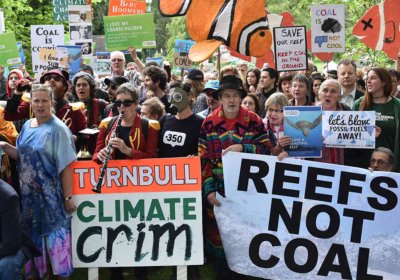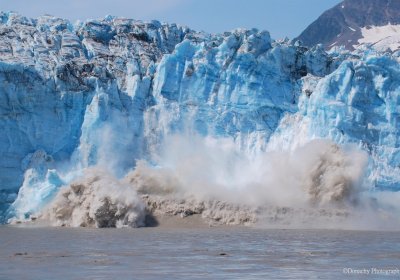In the three months to June, Australia's greenhouse gas emissions reached a record level, with the annual emissions on track to surpass the previous peak in 2009, according to the latest National Energy Emissions Audit published by The Australia Institute.
Greenhouse gas emissions and reduction targets
Veteran environmental campaigner and former Greens senator Bob Brown has previously pointed to Adani’s proposed Carmichael coal mine as the new Franklin River of environmental protest in Australia. Yet the future of this “climate bomb” hangs in the balance.
Last year was by far the hottest year in the observation record, with the global average surface temperature 1.24° Celcuis warmer than the late nineteenth century, according to NASA data. This broke the record set the previous year of 1.12°C, which in turn broke the previous mark set in 2014 of 1.01°C.
Although the El Nino conditions of 2015–16 had some influence — perhaps 0.2°C — it is clear that the warming trend is 1°C or more.
A Senate inquiry has recommended the closure of all 24 coal-fired power stations in Australia over the next 10 years and the creation of a comprehensive energy transition plan to help with the ordered closure of the plants.
The Retirement of Coal Fired power Stations Inquiry report, which was tabled in the Senate on November 28, made four recommendations:
My heart breaks over Category 4 Hurricane Matthew’s slamming of Haiti, Jamaica and Cuba.
When Hurricane Sandy struck New York City where I live, our entire neighbourhood was destroyed — every single house was uninhabitable.
[Ross Garnaut is a Professor of Economics at the Australian National University. In 2007 he was appointed to examine the impacts of climate change on the Australian economy and recommend medium to long-term policies and policy frameworks to improve the prospects for sustainable prosperity. The Garnaut Climate Change Review was finalised on September 30, 2008, with an update released on May 31, 2011. This is a speech given by Garnaut to the renewable energy summit hosted by the South Australian government on October 6.]
* * *
World famous climate scientist James Hansen, known as the “father of global warming” for being the first to see the threat of catastrophic climate change in 1988, has issued a new warning. Sea level changes are likely to be much higher, less stable and happen much sooner than previous predictions.
Reports of a giant breakaway iceberg and a new 64-kilometre crack in the Larsen ice shelf in the Antarctic peninsula — dramatic indicators of warmer weather — seem to have had little or no impact on the major greenhouse gas culprits at the world climate conference in Berlin. Australia and the United States are leading the charge against strict controls of greenhouse gas emissions in the two-week conference, which began on March 28.
- Previous page
- Page 4










